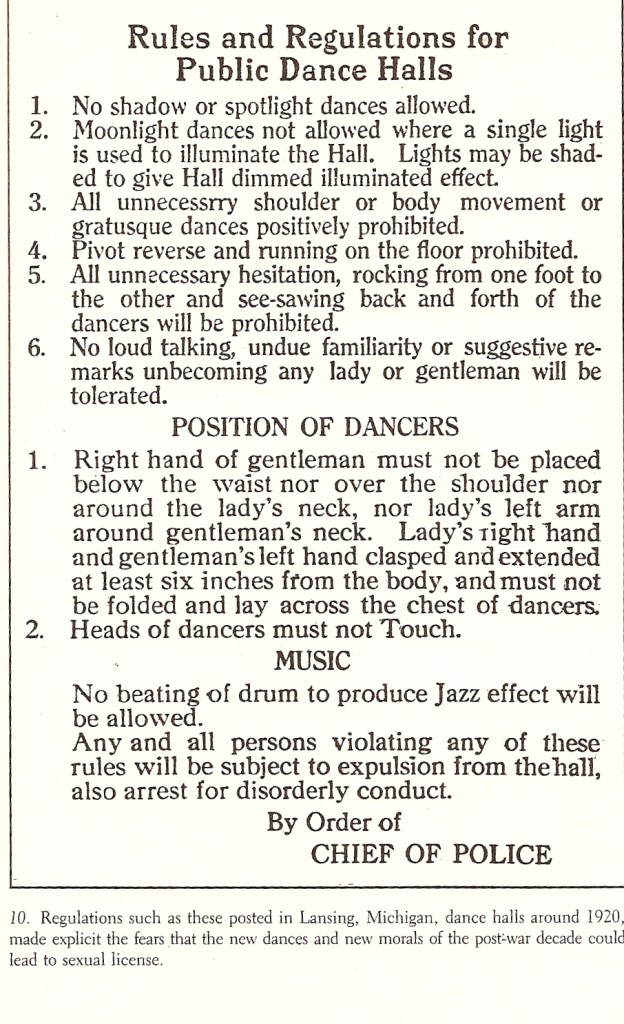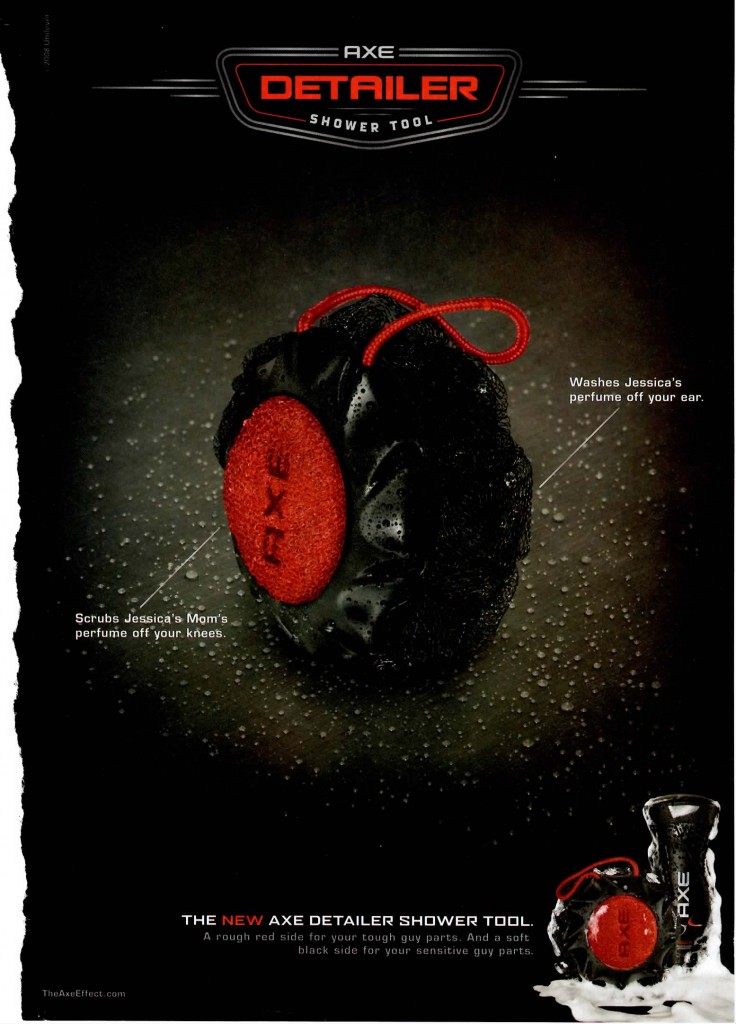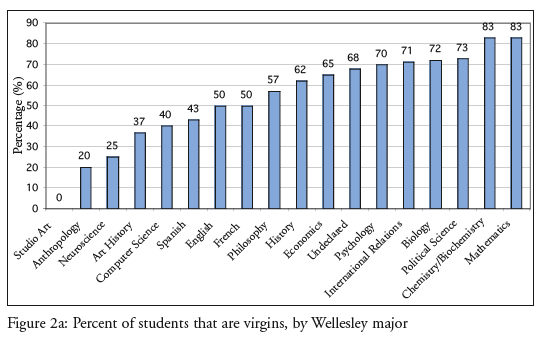I found this list of rules posted by the Lansing, Michigan, Chief of Police in dance halls during the 1920s in Allan Brandt’s book No Magic Bullet: A Social History of Venereal Disease in the United States Since 1880:

I don’t know what a “gratusque” dance, from point 3, is–maybe “grotesque” spelled incorrectly?
Notice the association of jazz with sexual impropriety. And although I think most readers, like me, will read the list and laugh at the fact that people thought dancing was so problematic, keep in mind that there are still many people who do. In college a friend told me he had never been allowed to go to a dance of any sort because his parents were from an evangelical Christian group that thought dancing was evil and led to sexual promiscuity. He’d also never eaten a single piece of Halloween candy, which horrified me way more than never going to a dance. I apparently am a tool of evil because I insisted that he enjoy the pleasures of Halloween candy for the first time. Next thing you know, he was drinking and smoking pot, proving that candy is a gateway drug.
True story.
Gwen Sharp is an associate professor of sociology at Nevada State College. You can follow her on Twitter at @gwensharpnv.






